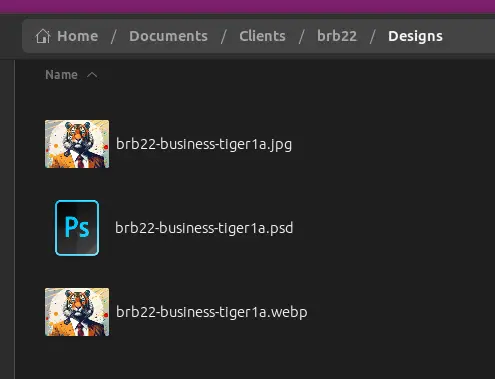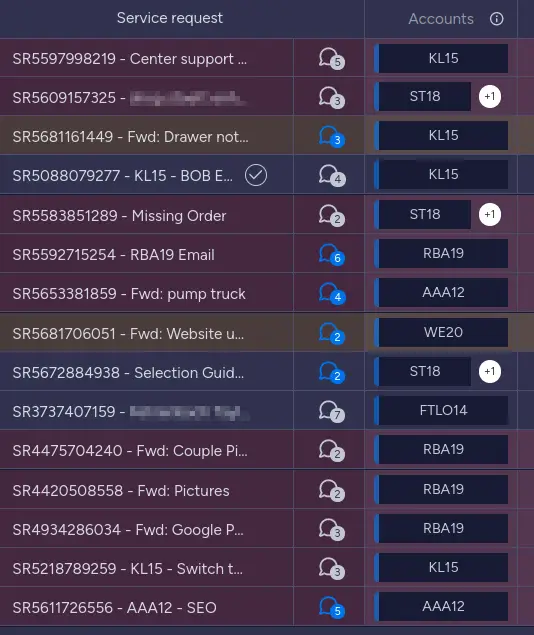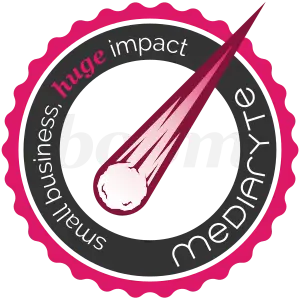
Overview: Streamline your small business workflow by creating and managing an organized identification system, also known as client account ids.
December 15, 2023
:
Chris Risse
:
13 minutes
:
Affiliate Disclosure
In the fast-paced world of small businesses, efficient workflow management is critical for success, but the same can be said no matter the speed of your small business. Being organized and well-managed helps free up time, either for more or less work, depending on your goals. Regardless, an effective methodology for optimizing your business processes is the use of client account IDs.
I want to explore with you and share the benefits of creating and managing client account IDs, along with practical tips on how to implement the methodology in your small business workflow. By understanding and applying client account IDs, you can improve team communication, enhance organization, and ultimately boost productivity. Jump in and discover how client account IDs can revolutionize your small business operation.
The basics of client account IDs
First things first, let's start off with the basics. Client account IDs are a way of creating unique identifiers assigned to each client account in your small business. They serve as the core label for organizing and managing tasks, files, and information specific to each client. The client account IDs should be everywhere and on everything in your office.
By assigning a unique ID to each client account, you can track and retrieve all client-related work quickly and efficiently. This methodology is extremely simple and offers numerous benefits, but like any system within your small business, it is only of value if you use it and apply it consistently, persistently, and constantly.
Where client account IDs are used
First and foremost, client account IDs allow for quick and easy access to client-specific files, folders, and other information. No more guessing if you have the correct Smith or Jones folder, since the folder name will contain the client account ID. This quick reference efficiency translates into faster completion of tasks, saving you measurable time across all of your daily tasks. This helps ensure deadlines are met, and client expectations are exceeded.
Implementing client account IDs in your small business workflow brings multiple benefits that impact both productivity and organization.
Using client account IDs improves overall organization within your small business. By categorizing and centralizing client-related work and communications, it reduces confusion and ensures all team members are on the same page. This organized approach enhances collaboration and allows team members to find the information they need without wasting time searching in unorganized files and folders.
Example: Instead of team members searching and rooting through their inbox trying to a find an email from a specific sender on a specific date and time without much other information to recall from, using client account IDs in the subject line of internal email communications can make finding a specific email a lot simpler. Additional benefits allow you to take advantage of automation, but tools recognizing the client account ID and taking automated action steps off of your manual plate of to-dos.
Your client account ID naming convention
To implement client account IDs effectively in your small business, it is important to establish a clear and consistent naming convention. Start by defining a naming convention that aligns with your business's needs and preferences. There isn't an exact way of creating your client account ID naming convention, so it is really up to you to determine what naming convetion makes the most sense for you and your small business.
Example: You could use the client's last name or organization name, a combination of initials and/or numbers, or any other method that suits your management requirements. Whatever the case may be, make sure that your naming convention is easy to understand and follow by all team members.
Consistency is key, but so is simplicity. Everyone within your team needs to be aware of the naming convention, and mandate them to apply it consistently. This consistency will allow for quick identification and retrieval of client-related work, reducing confusion and improving efficiency. That is why keeping your naming convention simple makes a lot of sense. If anyone on your team has to constantly stop and ask which account is which, it may mean your naming convention isn't simple or clear enough.
File management with client account IDs
Having an efficient file management system is an important aspect of optimizing your small business workflow. By using client account IDs with file management best practices, you can have a well organized, conveniently manageable, and easily searchable file structure.
Use your client account IDs as the primary name of your parent or top-level client account folders. Within your client folders, you can use subfolders logically that uses a clear hierarchy for storing the client account files and other resources.

Client Account IDs as folder names.

Organized subfolders in client folder.
Example: You can create a main folder for each client account, with subfolders for different projects or document types, such as Photos, Graphics, Designs, Drafts, etc. This way, all client-related files and documents are stored in a centralized location, making it easy to navigate and retrieve specific files when needed.
In addition to creating a simple, logical folder structure, it is important to use descriptive filenames that also contain the client account ID. Rather than generic or vague names, use filenames that provide relevant details such as project names, ticket numbers, and dates.

Client Account IDs at the start of a file name.
Example: Instead of naming a document "draft1.docx," consider naming it "clientID_projectname_draft1_2023.docx." This descriptive file name ensures that file is easily recognizable and saves time when searching for it.
Using client account IDs in work management systems
Now for the best part. If your small business team members are working together to accomplish tasks and projects, client account IDs can bring harmony to your overall workflow. Client account IDs can be used in many task or project management systems, such as job scheduling apps for contractors or small business customer relationship managers (CRM).

Client Account IDs in use in Monday
Using client account IDs in work management systems allows team members to easily associate projects and tasks with specific clients. Many work management systems allow for tagging projects and tasks, which can be used with the client account IDs to easily sort or filter through the work to find all tasks related to a specific client. Other work management systems may include an interface for client account management, where client account IDs are a perfect marriage.
If your small business uses cloud based file storage, your client folders can be easily linked directly within your work management system through use of your client account IDs. This capability can be easily automated as well, which saves a lot of time in your workflow.
Client Account ID Examples
Here are a few more examples of client account ID naming conventions to give you ideas on how to create your own. Aim for a naming convention that is as short as necessary that contains the necessary descriptive detail to help your workflow.
ClientName-ProjectTitle-Year
This naming convention uses the name of the client, followed by the title of the project and the year in which it was completed. For instance, if the client is ABC Corp and the project is Market Analysis for 2023, the client account ID could be "ABC-Market-Analysis-2023". You could also switch the format around to have the name of the client, year, and project title.Year-Initials-Number
This convention uses a combination of the initials of the client and a unique number, preceeded by the year. If the client is Jane Doe and the assigned number is 123, and the year is 2023, the client account ID could be "2023-JD-123". This naming convention prioritizes the year, followed by the client initials, for easy sorting.Alpha-Numeric Code
A random alpha-numeric code can also be used to identify client accounts with some added security, but can be a challenge if the length is too long. A client account ID could be "HJR763-2023". This naming convention creates a random code that ensures no client account IDs are duplicated. A hexidecimal client account ID could be fun and unique.Task Type & Date
This naming convention uses a combination of the name of the client and the type of task or job, followed by the date. If the client is ABC Co. and the task is a Finances Audit conducted on January 1, 2024, the client account ID could be "ABC-finances-audit-010124".Abbreviation-Number-Date
In this format, the client account ID uses a shortened version of the client's name, followed by the year the client started working with you. If the client is Underwater Basket Weaving and the date is April 1, 2023, the client account ID would be "UBW23".A final point to make is that your naming convention can be different within different parts of your operation, however, make sure to use the client account ID the same across all naming conventions in order to connect your naming convetions.
Here at Mediaryte, we’ve applied client account IDs for well over a decade. Every few years, the naming convention is updated to convey new details to help the team identify and understand the accounts quickly. We also use the client account IDs in many automation sequences, which save us countless hours of time in our workflow.
Client account IDs are a powerful methodology for your small business to begin optimizing your workflow and boost productivity. By creating simple client account IDs, using them in your file and folder names, in work management systems, email, and beyond, your small business operations can save countless hours through the shear well-organized identification system. The sooner you can adopt client account IDs as a core part of your workflow, you can begin experiencing all the benefits they canbring to your small business.
Helpful Resources For Small Business Workflow
How Small Business Automation Can Boost Your Productivity While Saving Time
You need to start adding small business automation to your workflows. Here is where to apply automation in your small business and how to get started now.Client Account IDs: The Key to Organizing Your Small Business Workflow
Streamline your small business workflow by creating and managing an organized identification system, also known as client account ids.Choosing The Right Job Scheduling App For Contractors & Trades Small Businesses
Stay organized, save time, and provide top-notch service to your customers with the right job scheduling app for contractors.The Importance Of Lead Tracking For Small Business
Understanding the importance of managing lead tracking for small business is the key step in increasing sales and using the tools to help you do it.The Top 3 Cost-Effective CRM Apps For Small Business – Small Biz CRM Guide
Here are the top 3 cost-effective CRM Apps for small business lead and customer management. Learn to manage your sales pipeline and qualify your leads.About The Author

Chris Risse
Chris is the owner of Mediaryte, a digital commerce company working with local small businesses. He has worked with countless business owners on business mastery, systematizing processes, and quantifying results. Chris also is a competitive fat bike racer and has a fantastic sixth sense for detecting well hidden candy and treats.
